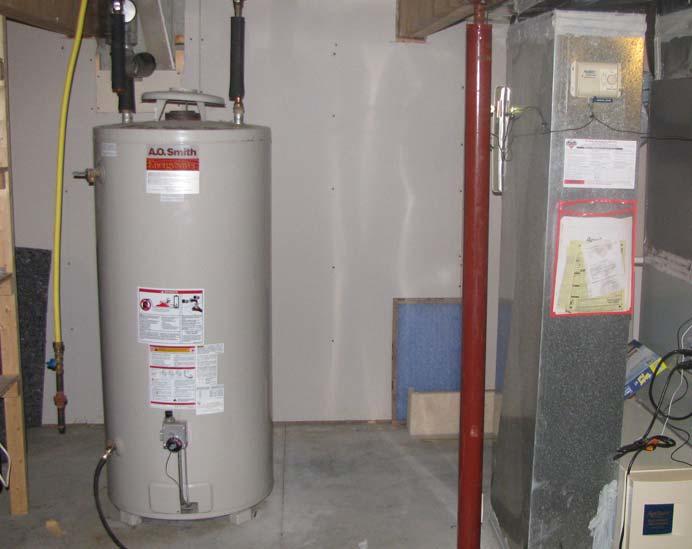Efficient Strategies for Maintaining Your Home's Hot Water System
Efficient Strategies for Maintaining Your Home's Hot Water System
Blog Article
What are your opinions regarding Water Heater Maintenance Tips You Can't Afford to Forget?
:max_bytes(150000):strip_icc()/how-to-drain-a-water-heater-2719055-hero-35f0548b0f1f42f0b13ba96a33ab8da2.jpg)
Warm water is crucial for everyday convenience, whether it's for a revitalizing shower or washing recipes. To guarantee your warm water system runs successfully and lasts much longer, routine upkeep is key. This post supplies functional ideas and insights on just how to keep your home's warm water system to stay clear of interruptions and expensive repairs.
Intro
Preserving your home's warm water system may seem daunting, yet with a few straightforward steps, you can ensure it runs smoothly for years to find. This guide covers whatever from understanding your warm water system to DIY upkeep suggestions and recognizing when to employ professional assistance.
Importance of Preserving Your Hot Water System
Normal maintenance not just extends the life expectancy of your warm water system but additionally ensures it runs efficiently. Ignoring maintenance can cause decreased effectiveness, higher energy costs, and even premature failing of the system.
Signs Your Hot Water System Demands Maintenance
Recognizing when your hot water system needs interest can protect against major problems. Keep an eye out for signs such as inconsistent water temperature level, odd sounds from the heating unit, or rustic water.
Comprehending Your Warm Water System
Prior to diving right into maintenance tasks, it's handy to understand the basic elements of your hot water system. Usually, this consists of the hot water heater itself, pipelines, anode rods, and temperature controls.
Regular Monthly Upkeep Tasks
Regular month-to-month checks can assist capture minor concerns before they escalate.
Purging the Hot Water Heater
Flushing your water heater gets rid of debris buildup, boosting efficiency and lengthening its life.
Monitoring and Replacing Anode Rods
Anode poles protect against deterioration inside the storage tank. Inspecting and replacing them when worn is crucial.
Examining and Readjusting Temperature Setups
Adjusting the temperature level setups makes sure optimal performance and safety and security.
DIY Tips for Maintenance
You can perform numerous maintenance tasks yourself to keep your hot water system in top condition.
Checking for Leaks
Frequently check pipes and links for leakages, as these can bring about water damages and greater bills.
Evaluating Pressure Relief Valves
Testing the stress safety valve guarantees it works correctly and prevents too much stress accumulation.
Protecting Pipes
Insulating hot water pipelines lowers warmth loss and can conserve energy.
When to Call a Professional
While DIY upkeep is valuable, some problems require professional expertise.
Facility Concerns Needing Professional Assistance
Examples consist of significant leaks, electric issues, or if your water heater is consistently underperforming.
Routine Professional Upkeep Advantages
Professional upkeep can include thorough examinations, tune-ups, and ensuring compliance with security criteria.
Conclusion
Normal maintenance of your home's warm water system is vital for efficiency, long life, and expense financial savings. By complying with these tips and understanding when to seek expert assistance, you can guarantee a reliable supply of hot water without unanticipated interruptions.
Water Heater Maintenance Tips
Test the TPR Valve
Shut off the power and the cold-water supply valve. Place a bucket under the pipe connected to the temperature-pressure-release (TPR) valve on the top or side of the tank. (This valve opens if the tank pressure gets too high.) Lift the valve’s tab to let some water out, then let go. If water keeps flowing, drain the tank partway, unscrew the old valve with a pipe wrench, and install a new one. Check the Anode Rod
Put a hose to the tank’s drain cock and let out a few gallons of water. Now fit a 1 1/16-inch socket onto the rod’s hex head on top of the heater (or under its top plate) and unscrew the rod. If it’s less than ½ inch thick or coated with calcium, buy a new one, wrap its threads with Teflon tape, put it back in the tank, and tighten securely. Use this segmented rod if headroom above the tank is limited. Drain the Tank and Wash Out Sediment
Drain the remaining water in the tank into the bucket, then stir up the sediment on the tank’s bottom by briefly opening the cold-water supply valve. Drain and repeat until clean water comes out of the hose. Close the drain cock, refill the tank, and turn its power back on. Adjust the Temperature
Find the temperature dial on the side of the tank and unscrew its cover. Adjust the dial to 120 degrees using a flathead screwdriver. For every 10 degrees the temperature is lowered, you can expect to save up to 5 percent in energy costs. Turn the water heater off or the thermostat down to its lowest setting if you plan to be away from home for more than three days. Insulate the Pipes
Buy some self-sticking 3/8-inch-thick foam pipe insulation that matches the pipes’ diameter. Slide the foam over the hot-and cold-water pipes as far as you can reach. Insulating the cold-water pipe prevents condensation in summer. Peel the tape and squeeze the insulation closed. If the pipe is 6 inches or less from the flue, cover it with 1-inch-thick unfaced fiberglass pipe wrap. https://www.thisoldhouse.com/plumbing/21016402/how-to-maintain-a-water-heater

I stumbled upon that blog post about How to Maintain a Hot Water Heater in a Few Simple Steps while exploring the internet. Enjoyed reading our review? Please quickly share it. Let others locate it. I thank you for your readership.
Schedule Services Report this page